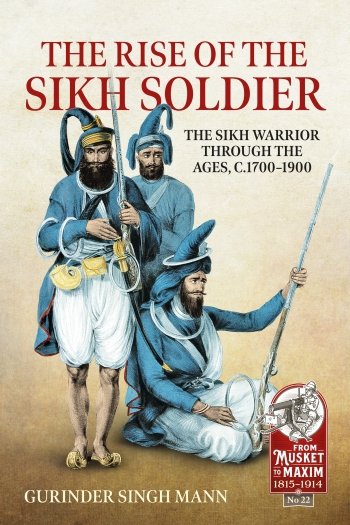-
Załączniki bezpieczeństwa
Załczniki do produktuZałączniki dotyczące bezpieczeństwa produktu zawierają informacje o opakowaniu produktu i mogą dostarczać kluczowych informacji dotyczących bezpieczeństwa konkretnego produktu
-
Informacje o producencie
Informacje o producencieInformacje dotyczące produktu obejmują adres i powiązane dane producenta produktu.HELION
-
Osoba odpowiedzialna w UE
Osoba odpowiedzialna w UEPodmiot gospodarczy z siedzibą w UE zapewniający zgodność produktu z wymaganymi przepisami.
The might and military prowess of the Sikhs has been recorded in the annals of history but what actually constitutes this development has seldom been understood or discussed in a meaningful context. This book considers the rise of military methods from the time of the Gurus, and what the tenth preceptor Guru Gobind Singh was trying to achieve with the formation of the Khalsa, or fraternity of the pure. The development of saint soldiers during the testing time of the Misl, or Confederacy period, considers the role of Jassa Singh Ahluwalia and Charat Singh Sukerchakia. The author also looks at the formation of the Sikh Empire in the nineteenth century, and considers the role of Maharajah Ranjit Singh, and his notorious warriors Akali Phula Singh and Hari Singh Nalwa. Underrepresented female warriors, such as Sahib Kaur and Sada Kaur, are also given coverage to reflect their important, but largely forgotten, part in Sikh history.
During the reign of Maharajah Ranjit Singh there was a deliberate change in military methods of the Sikhs. The movement from the predominant favouring of cavalry to the Europeanisation of the Sikh Army is examined. The Anglo Sikh Wars of 1845-1846 and 1848-1849 are given consideration in terms of the military tactics used by opposing armies, along with a brief examination of the major battles and the course of the war. After the Anglo-Sikh Wars the Sikhs became an important part of the British military forces in the Indian Empire, and the deployment of Sikhs in campaigns during the time of the British Indian Army, many outside of the subcontinent, is also considered.
The book is supplemented with maps of battles, and illustrated with rare military images, relics, and artefacts, together with the appendices citing important documents and letters.








